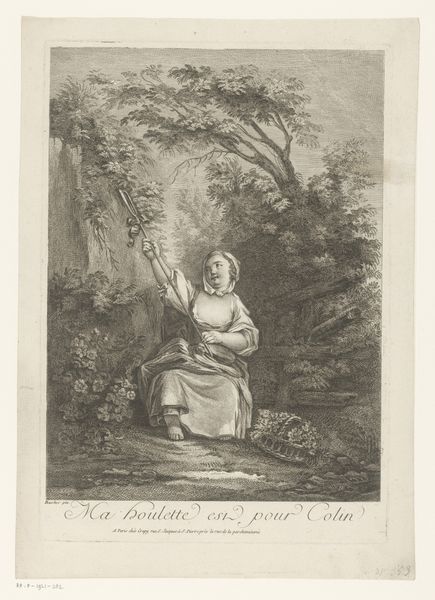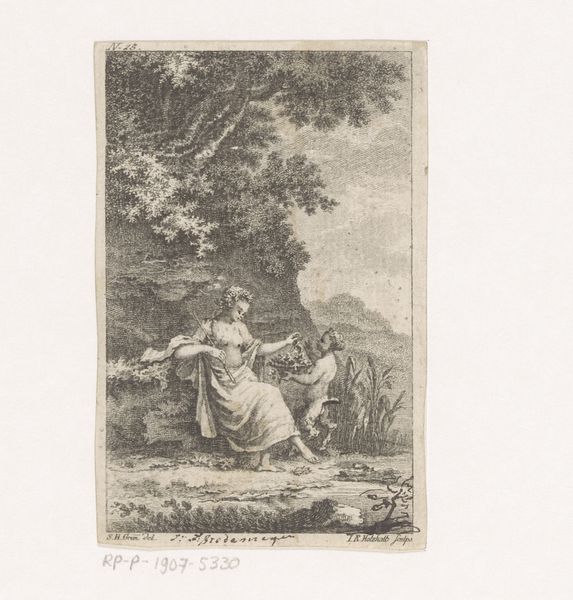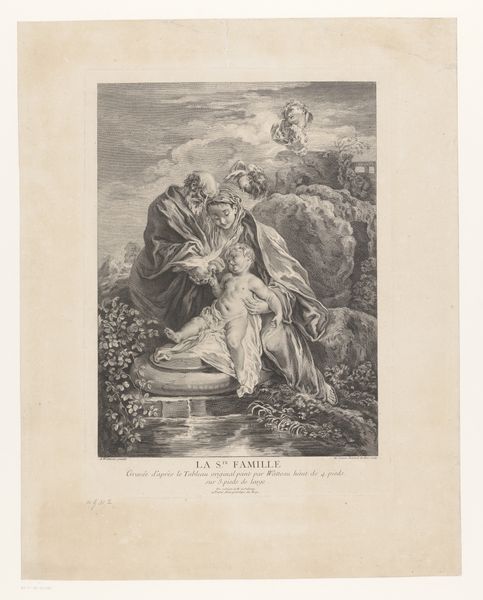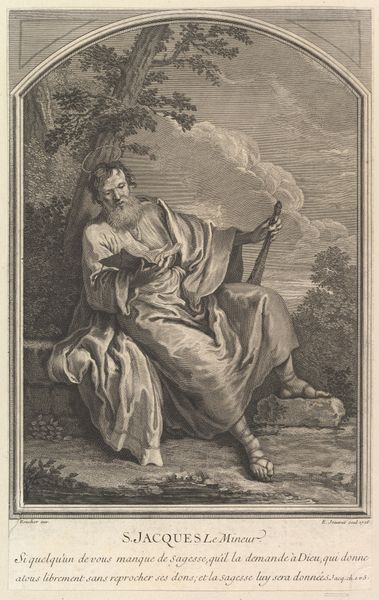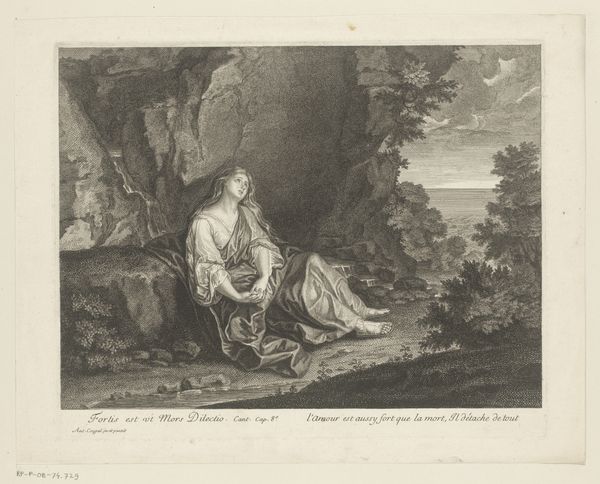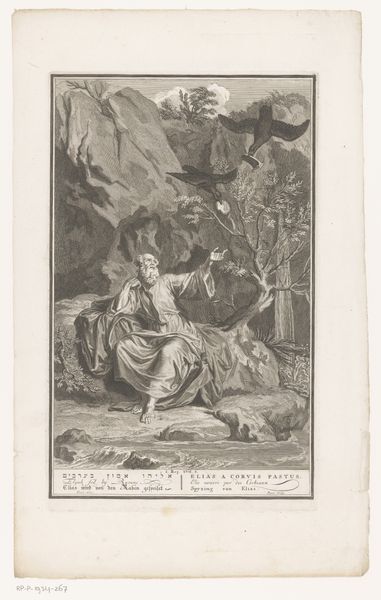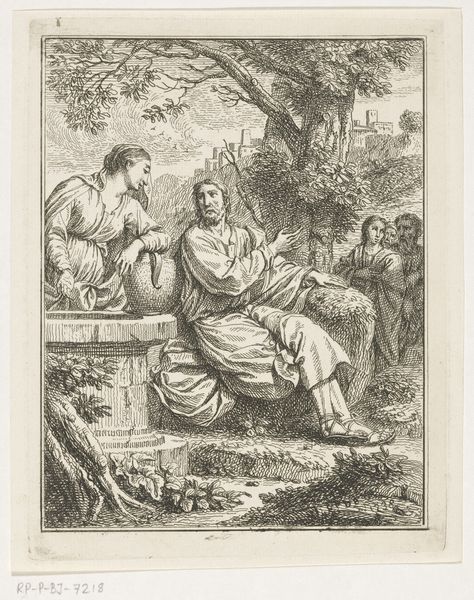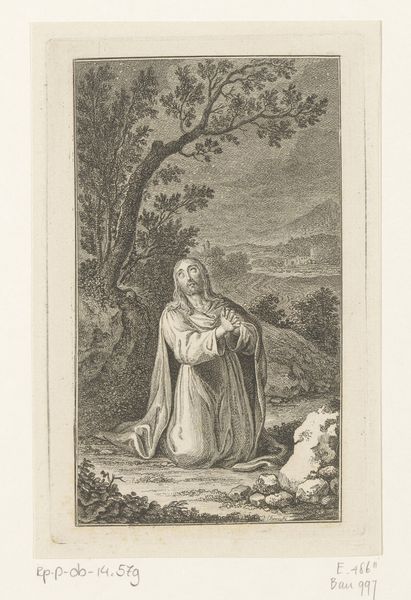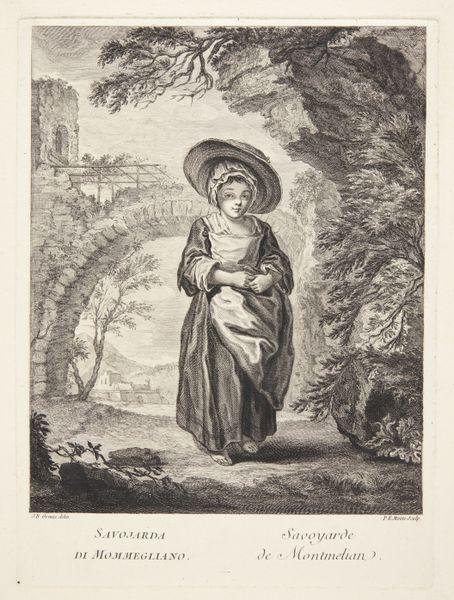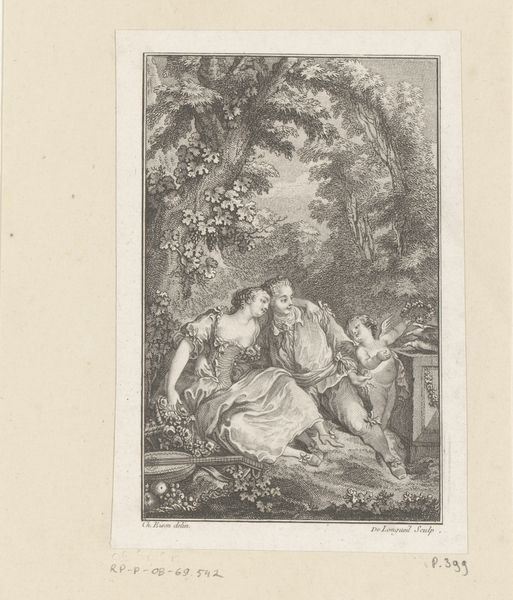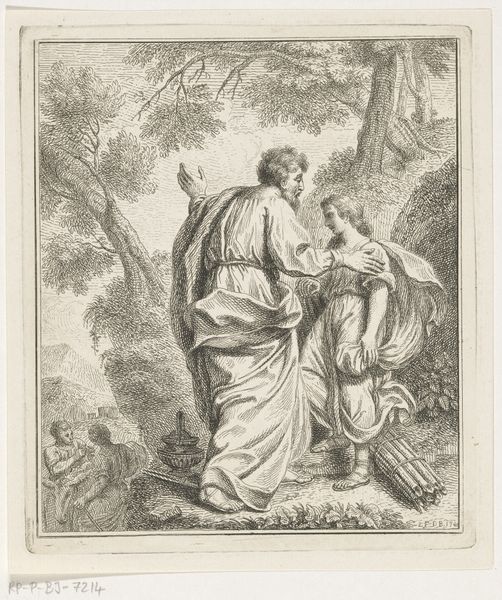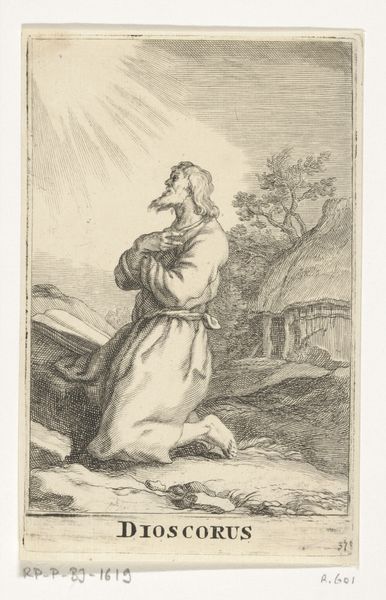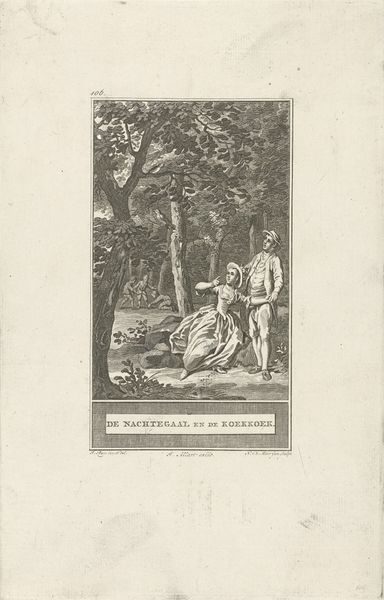
print, intaglio, engraving
#
portrait
#
narrative-art
#
baroque
# print
#
intaglio
#
old engraving style
#
figuration
#
history-painting
#
engraving
Dimensions: height 206 mm, width 122 mm
Copyright: Rijks Museum: Open Domain
Editor: This intaglio print, “Boetvaardige Petrus,” is attributed to Etienne Picart and dated between 1642 and 1721. It portrays a kneeling man in what appears to be a moment of sorrow. The overall mood is somber, perhaps a recognition of guilt. How do you read this piece? Curator: I am immediately drawn to the mechanics of its production, especially how Picart has used the intaglio technique. Consider the laborious process of carving these delicate lines into a metal plate, a skilled craft. The material – the metal plate, the ink, the paper – each played a crucial role in disseminating this image widely. What might a study of the economics and labor involved in producing and distributing prints like this reveal about the market for religious imagery in that time? Editor: So, you're less interested in the religious aspect and more in its production as a commodity? Curator: Not entirely. Religious imagery always served a purpose beyond devotion. This print would have circulated in specific social contexts, perhaps to reinforce certain moral standards or social hierarchies. Look at how the artist meticulously depicted the details. What labor went into making that happen? And, for whom? We should consider that alongside the biblical narrative. Editor: I never thought of it that way. It is a detailed image, and someone put a lot of work into making that plate and the many prints that followed. I hadn’t considered how that impacted its reception. Curator: Precisely! Examining the material conditions of its creation helps us move beyond simply interpreting its subject matter and consider the artwork's life within a broader social and economic framework. Editor: Right. I guess the material really IS the message, at least in part. Curator: Or, rather, material production significantly shapes the message. Editor: I’ll have to rethink how I look at prints now. It is fascinating to view this work as the result of significant material effort that impacts its reading. Thanks!
Comments
No comments
Be the first to comment and join the conversation on the ultimate creative platform.
